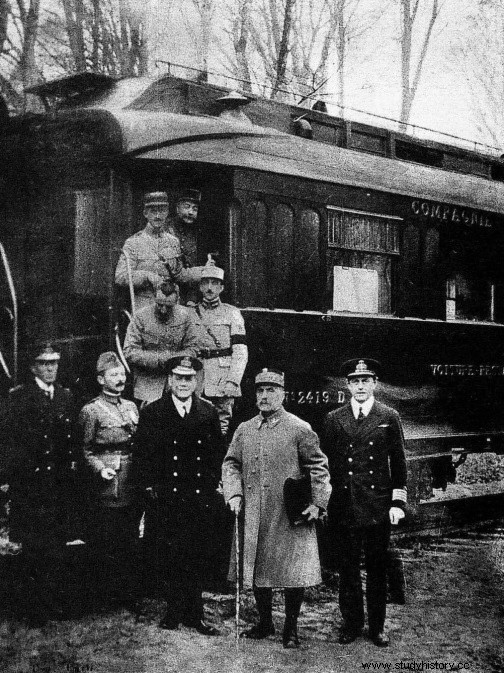The armistice between the Allies and Germany ended the fighting in World War I. The signing of the armistice took place at 5 am on November 11, 1918 in a wagon located on a siding in the forest of Compiègne (Rethondes, France) between the Commander-in-Chief of the Allied Forces , the Frenchman Ferdinand Foch , and the German politician Matthias Erzberger but it didn't take effect until 11 am... those six hours were fateful for some.

Armistice of 1918
In 1940, and after the battle of France, the Germans and the French signed an armistice on June 22, 1940 by which France was divided into a German occupation zone in the north and west, a small Italian occupation zone in the southeast , and an unoccupied zone, the free zone , In the south. And it was not a coincidence, but a demand from Hitler, the fact that it was signed in the same place as the 1918 armistice, in the Compiègne forest. But not only that, Hitler – making firewood from the fallen tree – wanted it to be signed in the same car. The wagon in question, from the Compagnie des Wagons-Lits It had been in a museum since 1927... Hitler ordered it to be removed and placed in the same place so that the French would suffer the same humiliation and in the same place.

The wagon was pulled through a hole in the museum wall
After the signing it was transferred to Berlin where it was exposed as a symbol of German recovery. In 1945, with the advance of the allied troops, it was sent to the city of Ohrdruf where the SS decided to burn it before it fell into the hands of the enemy.

Armistice of 1940
